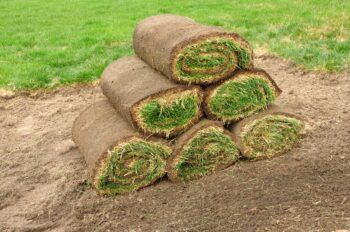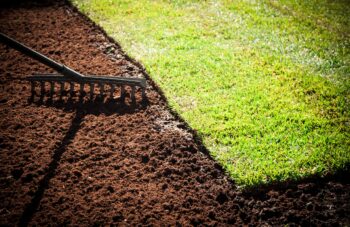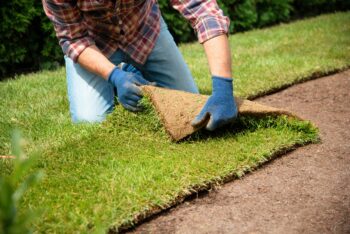When it comes to installing a new lawn, sod is a popular option that provides instant beauty and functionality. But, sshould you lay sod in the fall? While sod can be laid at any time of the year, choosing the optimal season for installation greatly enhances your chances of success.
Early to mid fall is widely considered the best time for sod installation, yielding outstanding results and establishing a strong, healthy turf. In this article, we will explore the benefits of laying sod in the fall, along with essential tips for a smooth installation process and aftercare instructions.

Why Choose Fall for Sod Installation?
Opting for fall installation offers numerous advantages that contribute to the long-term success of your lawn. Here are some reasons why laying sod in the fall is a wise choice:
Ideal Temperatures: The mild temperatures of early to mid fall create a favorable environment for new sod installation. Cooler weather reduces the stress on the grass, allowing it to establish strong roots without the extreme heat of summer or the harsh conditions of winter.
Less Watering: Fall weather often brings rainfall that can help provide the necessary moisture for newly installed sod. This reduces the reliance on frequent watering, helping you save water and conserve resources. However, it is important to monitor lawn water management.
Weed and Pest Control: Fall is an ideal time to combat weeds and pests. By laying sod in the fall, you have a head start in establishing a healthy lawn before common weeds and pests become active in the warmer months.
Time to Establish Roots: Installing sod in the fall allows ample time for the roots to establish and grow before winter arrives. This helps to ensure a healthy and robust lawn come springtime.
Read this pdf published by Texas A&M University to learn how to select and install sod.
Tips for Laying Sod in the Fall

To maximize the success of your fall sod installation, consider the following tips:
Prepare the Soil: Start by preparing the soil by removing any debris, rocks, or existing vegetation. Loosen the soil using a tiller or rake to a depth of at least 6 inches to ensure proper root penetration.
Grade and Level the Area: Proper grading helps ensure proper drainage and prevents water pooling. Use a rake or a lawn roller to level the area and create a smooth surface for the sod.
Choose High-Quality Sod: Selecting high-quality sod is crucial for a successful installation. Look for sod that is free of pests, diseases, and weeds. Ideally, choose sod that is well-suited to your region’s climate and soil type.
Install Sod Immediately: It is best to install the sod as soon as possible after it is delivered or picked up. Avoid letting it sit for long periods, as this can cause the roots to dry out.
Properly Lay the Sod: Lay the sod tightly together in a staggered pattern, making sure the edges are tight against each other. Avoid stretching or overlapping the edges. Use a sharp knife to cut the sod to fit around curves or irregular shapes.
Laying sod properly is a lot of work. Let us do the hard work for you. Hop on over to our sod installation service page.

Aftercare Instructions for Fall Sod Installation
After laying the sod, follow these essential aftercare instructions:
Watering: Immediately water the newly laid sod thoroughly to ensure the roots come in contact with the soil. Water deeply to encourage root growth and water as needed to keep the sod consistently moist until it is established. Avoid overwatering, as this leads to shallow root growth and other issues.
Mowing and Fertilization: Wait until the sod has established a strong root system before mowing. Once it reaches a height of approximately 3 inches, mow to a height of 2 inches. If necessary, apply a balanced fertilizer about a month after installation to promote healthy growth.
Check out our lawn fertilization service page to find out how we can assist you.
Avoid Heavy Foot Traffic: Limit foot traffic on the newly installed sod for the first couple of weeks to allow it to establish its roots. This will help prevent damage to the turf.
Monitor and Treat Weeds and Pests: Regularly inspect your new lawn for any signs of weed growth or pest infestations. Quickly address any potential issues to maintain the beauty and health of your sod.
We are experts at removing weeds and making sure they stay gone. Contact us today to learn more.
Conclusion
While sod can be laid at any time of the year, early to mid fall presents an optimal window for installation. The favorable temperatures, reduced watering needs, and time for root establishment make fall a prime season for successful sod installation.
Follow the tips provided for a smooth installation process and ensure proper aftercare to enjoy a stunning, lush lawn that will be the envy of your neighborhood for years to come.
